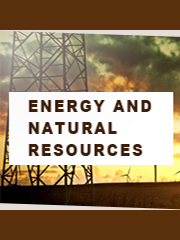Report overview
Offshore Wind Power is the generation of electricity from wind by constructing wind farms in water bodies. It is estimated to be one of the cheapest and cleanest forms of electricity generation. Offshore wind turbines are larger in size and have greater wind speed compared with onshore wind turbines. Offshore wind power offers various advantages compared with onshore wind power.
This report aims to provide a comprehensive presentation of the global market for Offshore Wind Energy, with both quantitative and qualitative analysis, to help readers develop business/growth strategies, assess the market competitive situation, analyze their position in the current marketplace, and make informed business decisions regarding Offshore Wind Energy. This report contains market size and forecasts of Offshore Wind Energy in global, including the following market information:
Global Offshore Wind Energy Market Revenue, 2018-2023, 2024-2029, ($ millions)
Global Offshore Wind Energy Market Sales, 2018-2023, 2024-2029, (K sqm)
Global top five Offshore Wind Energy companies in 2022 (%)
The global Offshore Wind Energy market was valued at US$ 20490 million in 2022 and is projected to reach US$ 25520 million by 2029, at a CAGR of 3.2% during the forecast period. The influence of COVID-19 and the Russia-Ukraine War were considered while estimating market sizes.
Germany is the largest Offshore Wind Power market with about 57% market share. Denmark is follower, accounting for about 12% market share.
The key players are Siemens, MHI Vestas, Senvion, Orano, BARD, Siemens(Gamesa), Hitachi, Sinovel, Shanghai Electric, Envision, Goldwind etc. Top 3 companies occupied about 73% market share.
We surveyed the Offshore Wind Energy manufacturers, suppliers, distributors and industry experts on this industry, involving the sales, revenue, demand, price change, product type, recent development and plan, industry trends, drivers, challenges, obstacles, and potential risks.
Total Market by Segment:
Global Offshore Wind Energy Market, by Type, 2018-2023, 2024-2029 ($ Millions) & (K sqm)
Global Offshore Wind Energy Market Segment Percentages, by Type, 2022 (%)
Upto 1 MW
1-3 MW
3-5 MW
5 MW and Above
Global Offshore Wind Energy Market, by Application, 2018-2023, 2024-2029 ($ Millions) & (K sqm)
Global Offshore Wind Energy Market Segment Percentages, by Application, 2022 (%)
Shallow Water
Deep Water
Global Offshore Wind Energy Market, By Region and Country, 2018-2023, 2024-2029 ($ Millions) & (K sqm)
Global Offshore Wind Energy Market Segment Percentages, By Region and Country, 2022 (%)
North America
US
Canada
Mexico
Europe
Germany
France
U.K.
Italy
Russia
Nordic Countries
Benelux
Rest of Europe
Asia
China
Japan
South Korea
Southeast Asia
India
Rest of Asia
South America
Brazil
Argentina
Rest of South America
Middle East & Africa
Turkey
Israel
Saudi Arabia
UAE
Rest of Middle East & Africa
Competitor Analysis
The report also provides analysis of leading market participants including:
Key companies Offshore Wind Energy revenues in global market, 2018-2023 (Estimated), ($ millions)
Key companies Offshore Wind Energy revenues share in global market, 2022 (%)
Key companies Offshore Wind Energy sales in global market, 2018-2023 (Estimated), (K sqm)
Key companies Offshore Wind Energy sales share in global market, 2022 (%)
Further, the report presents profiles of competitors in the market, key players include:
Siemens
MHI Vestas
ABB
General Electric
EEW Group
A2Sea
Nexans
Adwen Offshore
Equinor
Orsted
Senvion
Sinovel
Petrofac
Vestas Wind Systems
Goldwind Science and Technology
Gamesa Corporacion Technologica
Dong Energy
Suzlon
Nordex
China Ming Yang Wind Power
Alstom Energy
Areva Wind
Clipper Wind Power
Doosan Heavy Industries
Construction
Outline of Major Chapters:
Chapter 1: Introduces the definition of Offshore Wind Energy, market overview.
Chapter 2: Global Offshore Wind Energy market size in revenue and volume.
Chapter 3: Detailed analysis of Offshore Wind Energy manufacturers competitive landscape, price, sales and revenue market share, latest development plan, merger, and acquisition information, etc.
Chapter 4: Provides the analysis of various market segments by type, covering the market size and development potential of each market segment, to help readers find the blue ocean market in different market segments.
Chapter 5: Provides the analysis of various market segments by application, covering the market size and development potential of each market segment, to help readers find the blue ocean market in different downstream markets.
Chapter 6: Sales of Offshore Wind Energy in regional level and country level. It provides a quantitative analysis of the market size and development potential of each region and its main countries and introduces the market development, future development prospects, market space of each country in the world.
Chapter 7: Provides profiles of key players, introducing the basic situation of the main companies in the market in detail, including product sales, revenue, price, gross margin, product introduction, recent development, etc.
Chapter 8: Global Offshore Wind Energy capacity by region & country.
Chapter 9: Introduces the market dynamics, latest developments of the market, the driving factors and restrictive factors of the market, the challenges and risks faced by manufacturers in the industry, and the analysis of relevant policies in the industry.
Chapter 10: Analysis of industrial chain, including the upstream and downstream of the industry.
Chapter 11: The main points and conclusions of the report.
